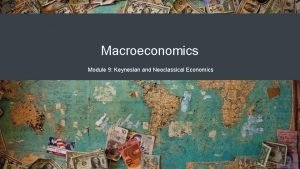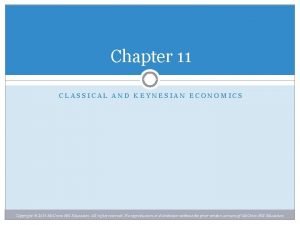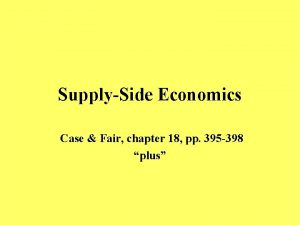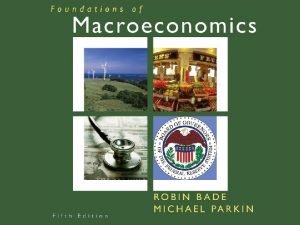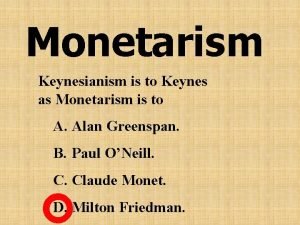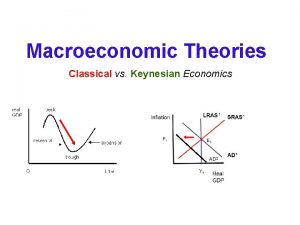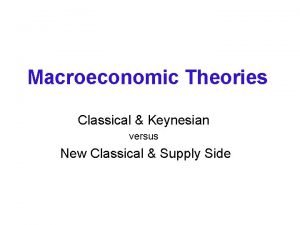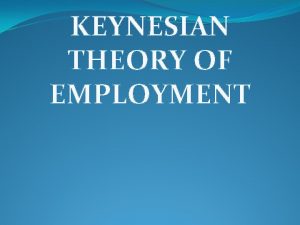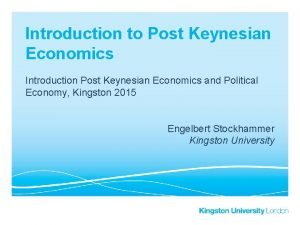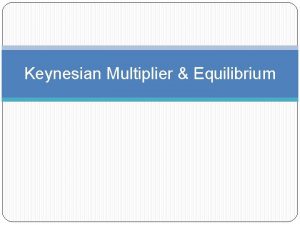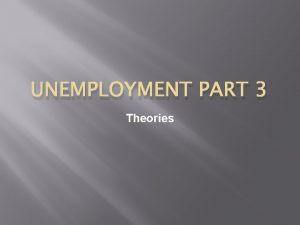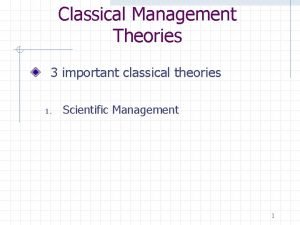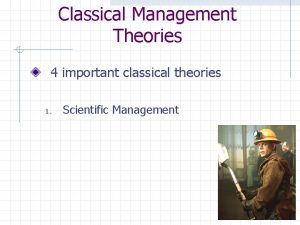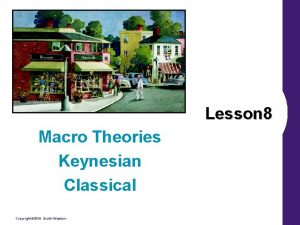Macroeconomic Theories Classical Keynesian versus New Classical Supply










- Slides: 10

Macroeconomic Theories Classical & Keynesian versus New Classical & Supply Side

CLASSICAL VIEW 1. 2. 3. 4. 5. 6. 7. 8. 9. Markets are naturally self regulating No government intervention necessary Recessions are temporary Wages & prices are flexible Savings = Investment Says law: Supply will create its own demand against minimum wages against welfare and government assistance Great Depression challenged Classical View

9 -2 b Classical View FIGURE 9 -1 Aggregate Supply and Aggregate Demand in Classical Economics

KEYNSIAN VIEW 1. 2. 3. 4. 5. 6. 7. 8. 9. Economy is inherently unstable Economy is not self adjusting recessions are long and can be permanent Major government intervention necessary wages and prices are sticky Support welfare and government assistance Lack of consumer demand caused great depression AS curve is very flat or horizontal Interest rates changes are not effective during recession – Money Demand not very sensitive to interest rates

Macroeconomic Debates • Two major schools decidedly against government intervention have developed: monetarism and new classical economics.

Monetarism • The main message is money matters/economy self-regulates • Monetarism believes in the Quantity Theory of Money – MV = PQ – Inflation is a monetary phenomena • Generally do not advocate activist monetary policy stabilization: – expanding money supply during bad times and slowing during good • Theory not compatible with upward sloping AS curve

New Classical • • Attempted to explain stagflation of 1970’s Business Cycles happen, but recessions are temporary AS could be broken down into short-run & Long run curves Government intervention is unnecessary –Prices/wages are flexible in long run, sticky in short-run • People make decisions on rational expectations –This explains “shocks” to the system

9 -2 l New Classical Model Both models can be used as a “New Classical Model” LR FIGURE 9 -5 Aggregate Supply in the New Classical Model SRAS

Supply-Side Policy • Government Incentives Matter • Goal: use incentives to shift the aggregate supply curve right • The supply-side toolbox consists of: – – Tax cuts to stimulate work effort, saving, and investment Deregulation to reduce production cost/stimulate investment. Expenditures on education training/research expands capacity to produce Immigration policies alter the size/skill of labor force

9 -4 Summary • No theory is designed to explain all the complex relationships of a macroeconomy • There is no simple relationships that can be easily manipulated to neatly solve various problems as they arise. • Assessing economic theories would be easier if we lived in closed economies.
 New classical and new keynesian macroeconomics
New classical and new keynesian macroeconomics New classical and new keynesian macroeconomics
New classical and new keynesian macroeconomics Neoclassical economics examples
Neoclassical economics examples Three ranges of as curve
Three ranges of as curve Keynesian vs supply side
Keynesian vs supply side Monetarist vs keynesian vs classical
Monetarist vs keynesian vs classical Keynesian vs classical vs monetarist
Keynesian vs classical vs monetarist Classical economics vs keynesian
Classical economics vs keynesian Monetarist vs classical economics
Monetarist vs classical economics Explain the keynesian theory of employment
Explain the keynesian theory of employment Keynesian policy
Keynesian policy


